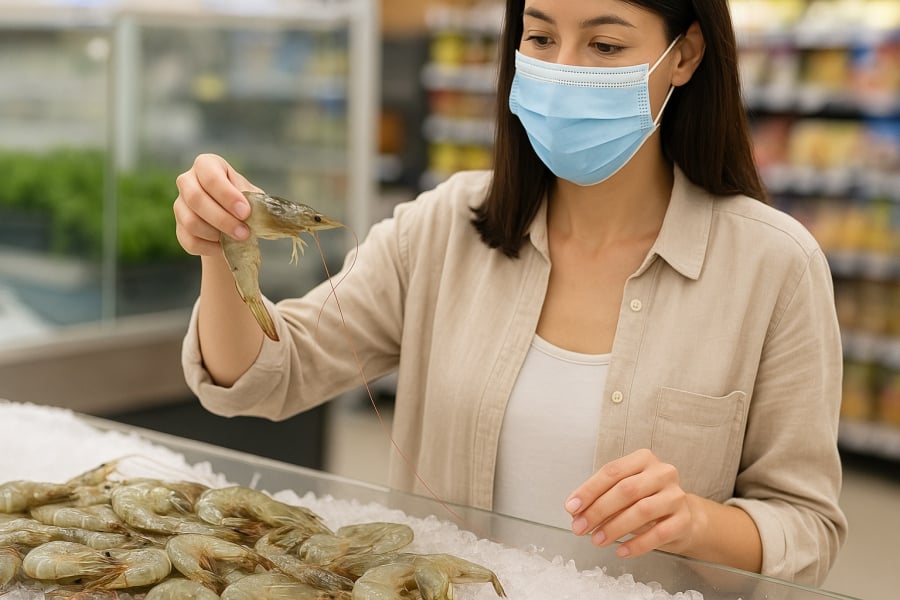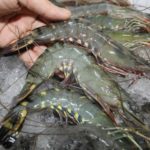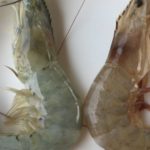How to Spot and Avoid Buying Low-Quality Shrimp
When shopping for shrimp, beware of those that appear dull and slimy, with a lackluster shell. This indicates early decomposition, which fosters harmful bacteria such as Vibrio or Salmonella, especially under inadequate storage conditions like those found in traditional markets.
Fresh shrimp should feel bouncy and firm to the touch, with a natural color that isn’t dull. Conversely, shrimp that have been left out will lose this characteristic and emit an unpleasant, strong fishy odor—a clear sign they belong in the trash, not your kitchen.

Soft, Fragile Shrimp: A Sign of Old Age
Shrimp are known for their firm, bouncy texture when fresh. If you touch them and find the meat soft and fragile, or if they easily break or crumble, they’ve likely spent too much time at room temperature. The enzymes within have been actively breaking down the meat’s structure.
Aside from the loss of nutrients, consuming such shrimp poses a risk of digestive issues, stomach pain, and nausea, especially for children or those with weakened immune systems.
Spotted or Unusually Colored Shrimp: A Sign of Illness
Be wary of shrimp with tiny black spots or white patches on their heads, bodies, or shells. These could indicate an illness contracted during farming, such as White Spot or Yellow Head disease, which weakens the shrimp and makes them unsafe for consumption.
Additionally, mold can grow on shrimp shells in humid environments, resembling tiny spots that are easily mistaken for natural markings. These microorganisms may not be completely destroyed during cooking, leading to potential food poisoning.

Chemically Enhanced or Weight-Altered Shrimp
One common scam is to inject shrimp with chemicals to increase their weight. These shrimp often have a glossy shell and feel heavier than usual. However, the meat may seem unnaturally firm and stiff, and when cooked, it shrinks drastically and releases a lot of water.
Chemicals used in this process, such as phosphates, formaldehyde, and water-retaining solutions, are not permitted in food preparation. Long-term accumulation of these substances in the body can damage the liver and kidneys and cause various metabolic disorders.
Shrimp Turning Black Hours After Purchase
Even if you buy live shrimp, keep an eye on their condition. If, after a few hours in the refrigerator or at room temperature, their heads turn black, it’s a clear sign of oxidation and decomposition. Bacteria thrive in the shrimp’s enzyme-rich heads, causing them to spoil quickly, even before any noticeable odor develops.
Shrimp with blackened heads often lose their natural sweetness, develop an odd flavor when cooked, and lack their characteristic chewiness. Consuming these can lead to stomach discomfort, diarrhea, and even intestinal infections.
Tips for Choosing Safe, High-Quality Shrimp
- Observe color and shape: Fresh shrimp have a bright, natural color with shiny, spotless shells.
- Sniff for odors: High-quality shrimp should smell lightly of the sea, not a strong fishy or chemical odor.
- Test for bounce: Gently press your finger on the shrimp’s body; if it bounces back, it’s a good sign.
- Buy from reputable sources: Opt for seafood shops, supermarkets, or large wholesale markets to ensure traceability and quality.
Shrimp are a delicious and nutritious food, but they can also be a health hazard if not chosen wisely. Stay away from the five types of shrimp mentioned above to protect your health and that of your family. Sometimes, saying no to seemingly beautiful but potentially harmful shrimp is the smartest choice you can make.
Is Fanned or Curled Shrimp Tail Better? 5 Pro Tips for Choosing the Best Shrimp and Avoiding Chemical-Injected Ones.
When it comes to choosing the best shrimp, you’ll find a variety of options at the market – some curved, some straight, some with curled tails, and some with flared tails. But which one should you go for? This guide will help you navigate through the options and steer clear of shrimp that has been injected with foreign substances or is past its prime.





































